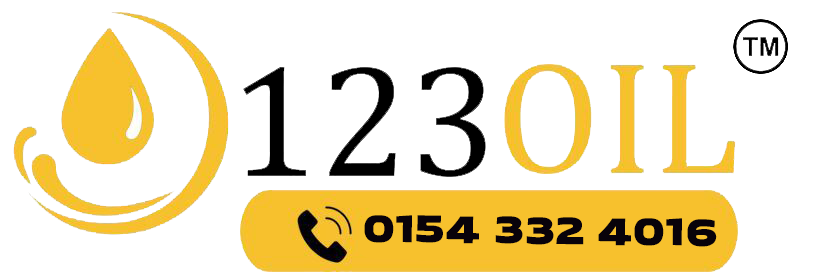Protecting Your Fuel Assets: A Practical Guide to Prevent Theft
Fuel theft remains a persistent issue for anyone who stores fuel or oil on their property—on farms, construction sites, residential properties, or gas stations. To help safeguard your valuable fuel supplies and discourage thieves, we’ve created this comprehensive guide. It’s designed to equip you with the knowledge and strategies to protect your assets from theft and minimise the risks of becoming a target.
Rising Tide of Fuel Theft
A Growing Concern in the Wake of Price Hikes and Regulation Changes
The increase in fuel theft can be traced to several economic and regulatory shifts. Global fuel prices have spiked recently due to ongoing international conflicts, reduced oil production, and trade restrictions. A concerning trend has emerged as fuel becomes more expensive: more individuals opt to drive off without paying after filling up their vehicles. This surge in theft is exacerbated by a key regulatory change implemented on April 1, 2022, which banned the use of rebated fuels—such as red diesel—for commercial purposes.
With the appearance of rebated and standard fuels now virtually indistinguishable, it has become much easier for thieves to target fuel supplies intended for personal use, leaving businesses and suppliers vulnerable to significant losses. The convergence of these factors has heightened the risks of fuel theft across the board, making it a pressing issue for consumers and fuel retailers alike.
Methods of Fuel Theft: How Criminals Target Fuel Supplies
Fuel theft can occur in various ways, with methods ranging from simple to more sophisticated approaches. The most common form of robbery involves criminals using basic tools, such as tubes or siphons, to manually remove fuel from tanks and transfer it into portable containers. While effective for small amounts of fuel, this method can be time-consuming.
However, more modern tactics have emerged, such as thieves using pumps to transfer fuel directly into larger storage tanks mounted on their vehicles. This allows them to quickly steal much larger quantities of fuel, making the crime faster and more efficient.
Unfortunately, these thefts often lead to significant damage. In many cases, sight gauges or fuel supply pipes are broken or severed during the theft. This makes the theft easier and can result in fuel leaking into the surrounding area, causing environmental damage.
8 Essential Strategies to Protect Fuel Assets from Theft
Implement a Robust Fuel Management System
A comprehensive fuel management system can be invaluable for detecting fuel theft, particularly when there are numerous users or the tank is out of direct sight. Effective systems should track user access, including time, date, and identity while offering an immediate defence mechanism against unauthorised usage through PIN codes, key fobs, or other access controls. Additionally, continuous monitoring of fuel levels is essential, especially during tank refills, when theft is most likely to occur.
Limit Entry Points
Minimise the number of access points to your fuel storage area. Always ensure gates remain locked and secure, and close unused exit routes. This helps prevent unauthorised entry and reduces the risk of opportunistic theft.
Enhance the Visibility of Fuel Tanks
Whenever feasible, position your fuel tanks in a location visible from a nearby building or an area with regular human activity, such as a farmhouse or a site security office. The increased visibility from inhabited spaces or staff areas adds an extra layer of deterrence.
Install Fuel Tank Alarms
Equipping fuel tanks with alarm systems is an effective way to detect potential theft. Remote fuel level sensors can trigger an alarm when the fuel level drops suddenly or falls below a preset threshold. If the tanks are in isolated areas, housing them in secure, alarmed steel containers can further protect them from tampering.
Adopt Secured Perimeter Standards
Consider installing perimeter fencing that meets the security standards outlined in LPS 1175 issue 8.1 A1 (SR1) or higher. A thorough security risk assessment should guide your decisions. Padlocks or similar locking mechanisms must conform to approved standards by Secured by Design (SBD). Additionally, implement strict key control procedures to ensure keys cannot be lost, copied, or misused.
Use Anti-Siphoning Devices
Install locking fuel caps and anti-siphoning devices at the tank’s filler neck to prevent fuel from being siphoned out. These devices make it difficult for thieves to insert a siphon pipe and remove fuel. This security measure is effective for stationary tanks and vehicles and heavy machinery, such as construction equipment. Use locks that comply with Police Preferred Specification (PPS) standards for maximum security.
Consider Advanced Detection Systems
A more advanced detection system could provide critical monitoring capabilities in high-risk areas. Accredited manufacturers offer SBD-approved fencing solutions that can be used to create secure, monitored perimeters, helping identify potential threats and breaches.
Restrict Vehicle Access
Where perimeter fencing isn’t viable, consider implementing physical barriers such as bollards or other vehicle mitigation measures. These devices can effectively limit easy vehicle access to your fuel storage area, preventing unauthorised individuals from driving in and stealing fuel.
What to Do if Fuel Theft is Happening
If you catch someone in the act of stealing fuel, your safety should be your top priority—never confront the thief directly.
- Dial 999 immediately and report the theft.
- If possible, discreetly capture footage of the theft for evidence.
- Note the vehicle’s license plate number only if it’s safe.
- Once the police arrive, get the crime reference number.
- Inform your insurance company about the incident.
- Consider enhancing your security measures to prevent future thefts.
The Financial Toll of Fuel Theft: A Rising Concern
Fuel theft has seen a sharp rise in recent years. The average financial loss for each petrol station due to theft is around £10,500 annually, according to the British Oil Security Syndicate (BOSS). For businesses storing larger quantities of fuel onsite, these costs can be even higher, factoring in the added impact on operations.
While fuel theft includes various types of fuels like diesel, kerosene, and gas being stolen from vehicles and tanks, the largest contributor remains “drive-off” incidents, where customers leave without paying.










